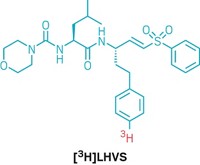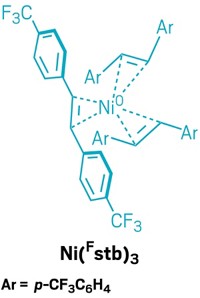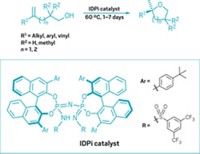Advertisement
Grab your lab coat. Let's get started
Welcome!
Welcome!
Create an account below to get 6 C&EN articles per month, receive newsletters and more - all free.
It seems this is your first time logging in online. Please enter the following information to continue.
As an ACS member you automatically get access to this site. All we need is few more details to create your reading experience.
Not you? Sign in with a different account.
Not you? Sign in with a different account.
ERROR 1
ERROR 1
ERROR 2
ERROR 2
ERROR 2
ERROR 2
ERROR 2
Password and Confirm password must match.
If you have an ACS member number, please enter it here so we can link this account to your membership. (optional)
ERROR 2
ACS values your privacy. By submitting your information, you are gaining access to C&EN and subscribing to our weekly newsletter. We use the information you provide to make your reading experience better, and we will never sell your data to third party members.
Synthesis
Taming A Metathesis Catalyst
by Bethany Halford
July 18, 2011
| A version of this story appeared in
Volume 89, Issue 29
By adding a bipyridine or a phenanthroline ligand to molybdenum metathesis catalysts, chemists in Germany have transformed the sensitive reagents into air-stable precatalysts that can be stored in an open flask for weeks (Angew. Chem. Int. Ed., DOI: 10.1002/anie.201102012). Johannes Heppekausen and Alois Fürstner of the Max Planck Institute for Coal Research note that tetracoordinate molybdenum alkylidenes are “amongst the most powerful alkene metathesis catalysts known to date.” But because of their sensitivity to air and moisture, the compounds can be tough to work with. Heppekausen and Fürstner discovered that they could transform molybdenum alkylidenes into stable solid precatalysts by reacting them with either 2,2'-bipyridine or 1,10-phenanthroline in toluene at room temperature. To liberate the active catalyst, the chemists simply mix the precatalyst with zinc chloride in toluene at 100 °C. The resulting bipyridine•ZnCl2 or phenanthroline•ZnCl2 precipitate has no effect on the catalyst and need not be filtered. “Our new method combines the convenience of handling of a crystalline and bench-stable precatalyst with the benefits of a well-defined active species of proven versatility,” the researchers write.





Join the conversation
Contact the reporter
Submit a Letter to the Editor for publication
Engage with us on Twitter